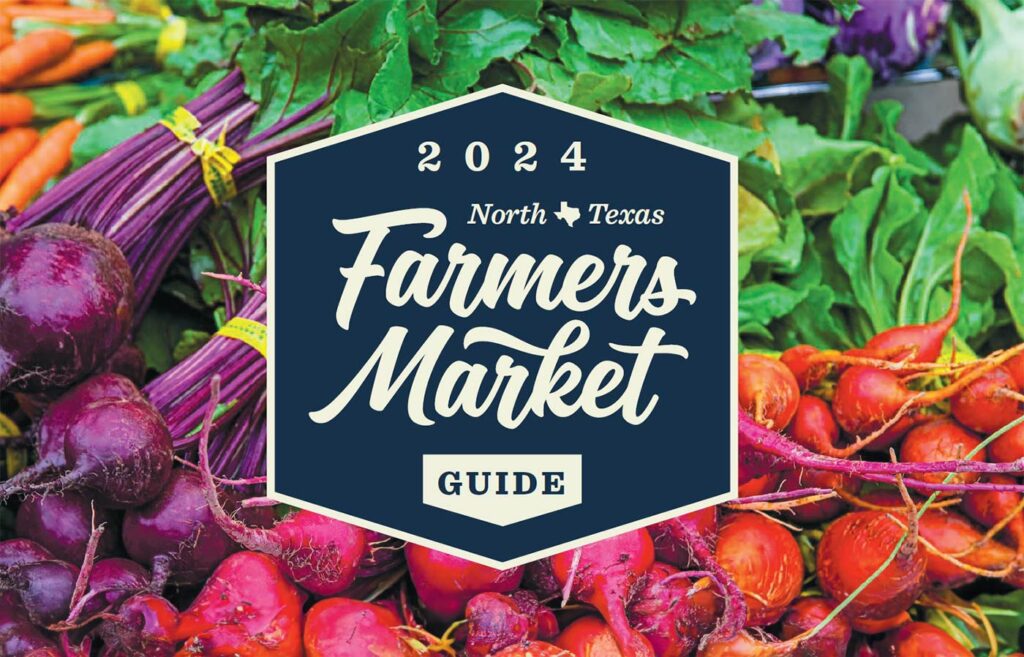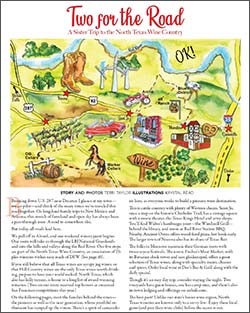Photography Andrew Vracin • Design Gae Benson
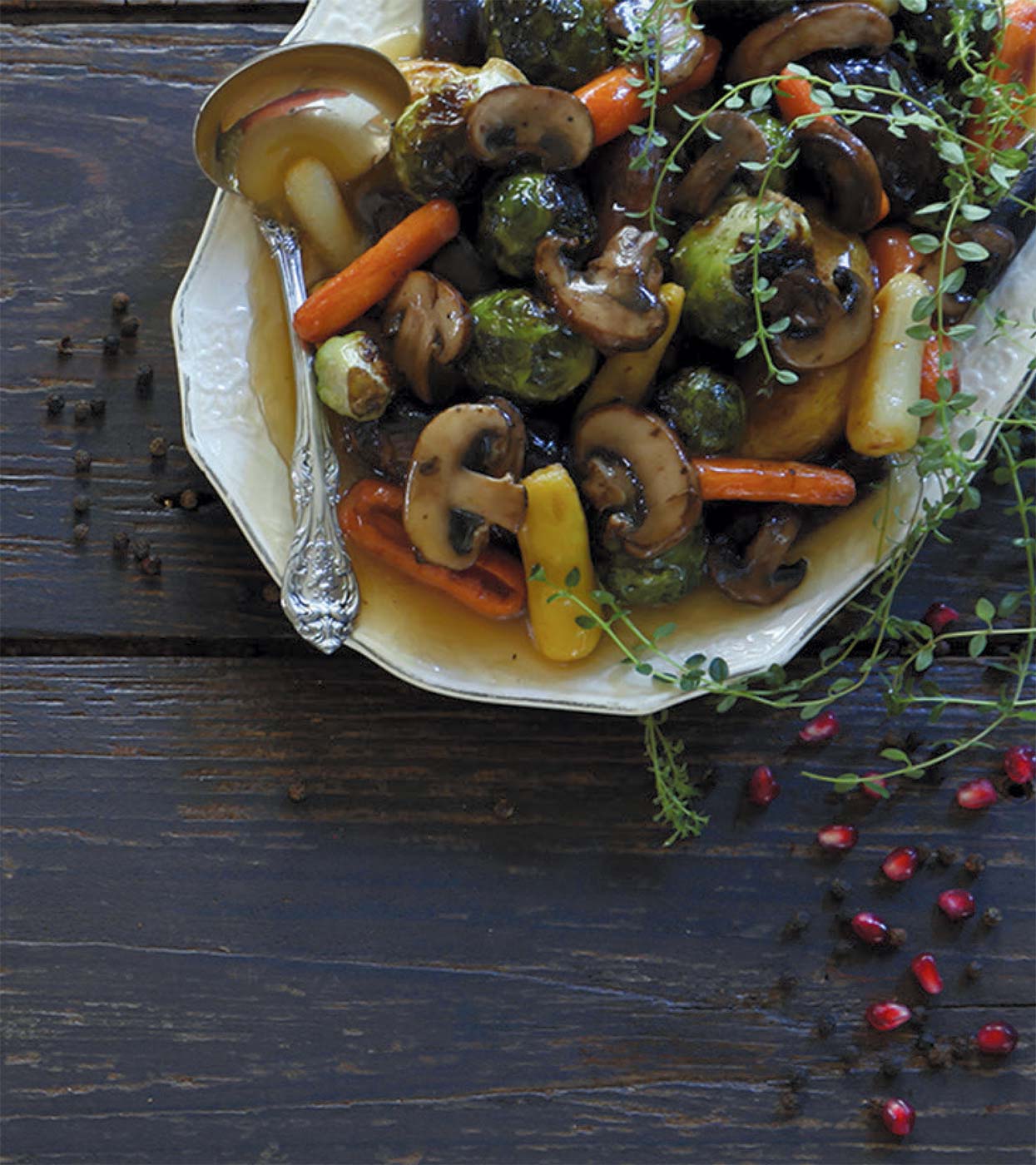
Fall and winter are gravy seasons. Whether for weeknight roast chicken, holiday turkey or beef tenderloin, gravy makes anything roasted—including vegetables— even better. How much better? So much better that I get invited to three Thanksgivings because I can make gravy.
It got started at a friend’s house when we sat down for turkey and dressing. Someone asked, “Where’s the gravy?” The startled hostess said, “I don’t make gravy.” To which I replied, “I do. And it won’t take but fi ve minutes.” I did, and it didn’t. We were all happy.
The retelling of that story has gotten me invited to two more feasts around Thanksgiving. While I’m happy to help, I can’t be everywhere, so let’s go to gravy boot camp. There’s no one way to make gravy, but what follows on these pages will get you started. You, too, can make gravy!
BOOT CAMP BASICS
Gravy happens when starch and fat combine to thicken a liquid, usually stock and pan drippings. All-purpose flour is the most common thickener: It’s versatile, makes a sturdy gravy or sauce, and most kitchens have some on the shelf. So-called “instant flour,” such as Wondra, also works well and lessens lumping.
Flour isn’t the only option, however. Cornstarch and arrowroot powder (aka flour) also make good gravy.
WHICH THICKENER TO USE?
Flour: Makes an opaque, silky, sturdy gravy with a matte finish.
Cornstarch: Makes a translucent, shimmery gravy with a satiny finish. (That’s why stir-fries use cornstarch to thicken the sauce instead of flour.)
Arrowroot: Makes a translucent, shimmery gravy with a satiny finish. It is the choice for paleo, gluten- free and grain-free diets.
ROUX vs. SLURRY
Roux: A smooth paste made from fat and flour. Generally speaking, you pour stock and/or drippings into a roux to make gravy. Works well with gravy for turkey and chicken.
Slurry: A smooth paste made from cornstarch, arrowroot or fl our and water or stock. Generally, you stir a slurry into pan drippings or stock to make gravy. Note: If making a slurry with flour, instant flour is the best choice to avoid lumps. Works well with beef and vegetable gravies.
STOCK UP
No matter which thickener you use, good gravy begins with rich, flavorful stock. If you don’t want to make your own, consider using the intensely rich Stocks & Bondy brand made by local chef Joanne Bondy, available at several retail outlets, and at the Dallas Farmers Market in The Market building.
TIPS FROM DOTTY
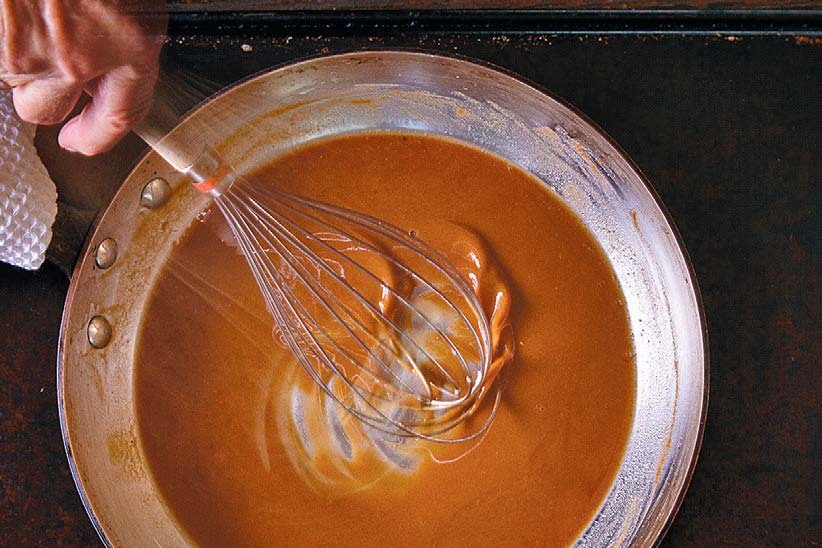
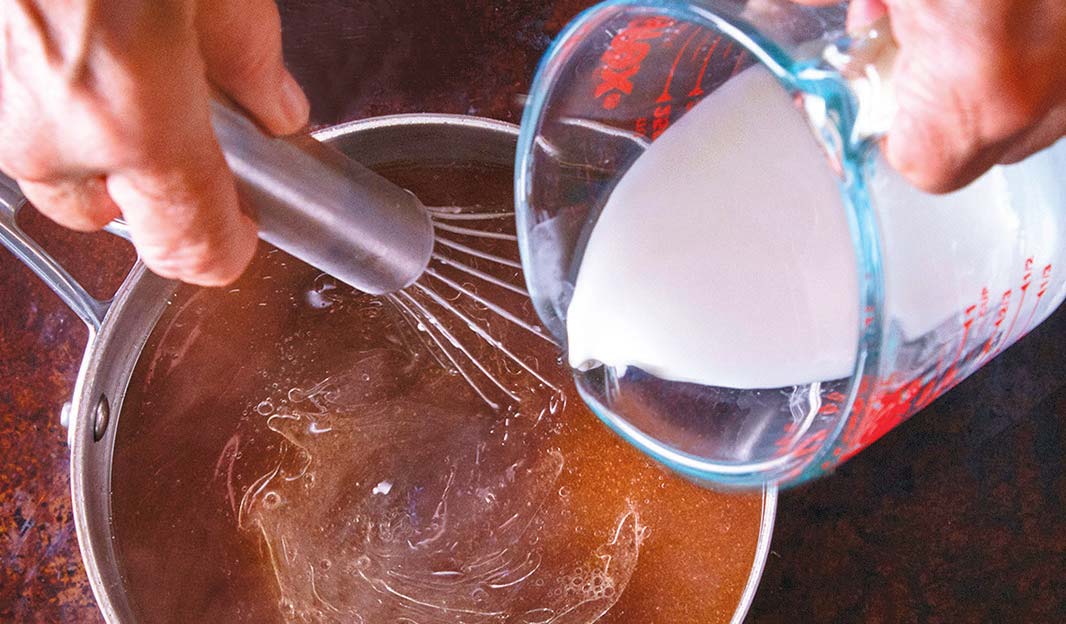
RECIPES
Boot Camp Roast Gravy
Recipe by Dotty Griffith • Photography by Andrew Vracin
Fall and winter are gravy seasons. Whether for weeknight roast chicken, holiday turkey or beef tenderloin, gravy makes anything roasted—including vegetables—even better. How much better? So much better that I get invited to three Thanksgivings because I can make gravy.
Boot Camp Cream Gravy
Recipe by Dotty Griffith • Photography by Andrew Vracin
Cream (Pan) Gravy is a Texas tradition on mashed potatoes with chicken-fried steak and fried chicken. For breakfast, add some crisp sausage crumbles, and gravy slathered over split biscuits becomes breakfast. This recipe assumes you’ve fried something—such as chicken, sausage crumbles or bacon—and have pan drippings.
Dotty Griffith is the author of THE TEXAS HOLIDAY COOKBOOK - Second Edition ©2013, Taylor Trade Publishing.
- Dotty Griffithhttps://www.edibledfw.com/author/dgriffith/
- Dotty Griffithhttps://www.edibledfw.com/author/dgriffith/
- Dotty Griffithhttps://www.edibledfw.com/author/dgriffith/
- Dotty Griffithhttps://www.edibledfw.com/author/dgriffith/



